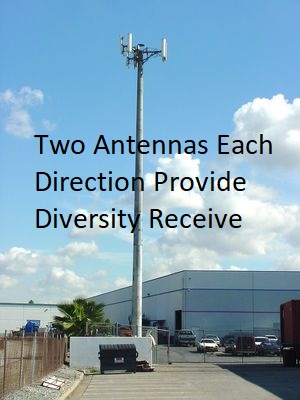Land Mobile
Radio Greatest
Disappointment
by Fred Daniel
Land Mobile Radio [LMR] started out with large vehicular
mounted radios, basically the same radio as the base
station, just powered by the vehicle battery instead of 110 VAC. This
allowed the mobile and base station coverage to be the about the same.
Over time, with improvements in technology the mobile radios
became smaller and opened the door to ever smaller hand-held
radios. Today, most radio users prefer hand-held radios over
vehicle mounted radios because it allows greater mobility and
flexibility. However, except for very expensive Public Safety systems,
most LMR users complain about the poor talk-back coverage of their
handheld radios. Many users have been forced to carry a
cellular phone as their communications backup.
 Cellular systems do not suffer with this problem, even though the
cellular phones operate at a small fraction of the power of a LMR
handheld. This occurs because the cellular industry discovered more
than 30 years ago that a second antenna & diversity receiver
was necessary at each cell site, to compensate for the variations in
receive signal due to low handheld transmit power, signal multi-path
and reflections.
The addition of a second antenna & receiver adds a small
incremental cost to the overall system but makes a huge improvement in
reception.
Cellular systems do not suffer with this problem, even though the
cellular phones operate at a small fraction of the power of a LMR
handheld. This occurs because the cellular industry discovered more
than 30 years ago that a second antenna & diversity receiver
was necessary at each cell site, to compensate for the variations in
receive signal due to low handheld transmit power, signal multi-path
and reflections.
The addition of a second antenna & receiver adds a small
incremental cost to the overall system but makes a huge improvement in
reception.
Today after several decades of field proven use, manufacturers of
LMR repeaters still do not routinely offer a second diversity
receiver, to compensate for the unbalanced coverage
between handhelds and repeaters. Manufacturers
continue to offer the most basic hardware because there is no unified
voice in the LMR community to demand this simple but effective
enhancement, like there is in the cellular industry. When this issue is
brought to the manufacturers, they say no one requests this option and
they offer the use of a more complex multi-receiver voter system to
provide this feature. This does work but since it is not
integrated into the basic repeater, the cost is
often greater than the repeater itself.
Users in the LMR marketplace need a unified
voice in the form of
an association of users to advocate at the FCC and to speak to the
LMR marketplace. Otherwise the LMR users will continue to
only get the technology enhancements the manufacturers are willing to
offer up, regardless of the general availability or need.
This was proven out by manufacturers offering the more
expensive digital radios as the path to the future, rather than simply
adding diversity receivers at the repeaters, which they are reserving
as an enhancement to their digital product line offering, and only when
necessary. Analog FM still has a lot of useful life and equal
coverage if properly implemented, at a small fraction of the cost of
any digital solution.